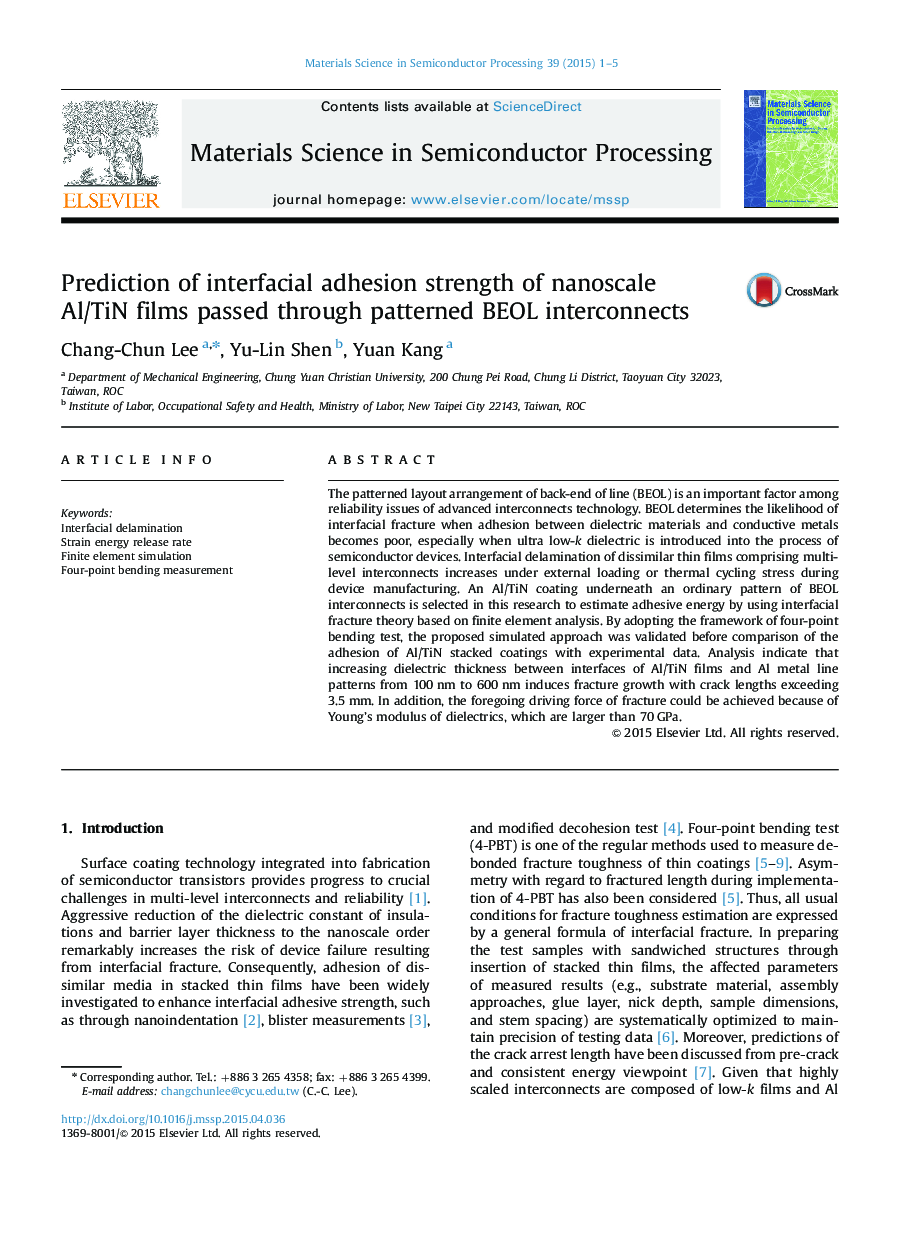| Article ID | Journal | Published Year | Pages | File Type |
|---|---|---|---|---|
| 7118659 | Materials Science in Semiconductor Processing | 2015 | 5 Pages |
Abstract
The patterned layout arrangement of back-end of line (BEOL) is an important factor among reliability issues of advanced interconnects technology. BEOL determines the likelihood of interfacial fracture when adhesion between dielectric materials and conductive metals becomes poor, especially when ultra low-k dielectric is introduced into the process of semiconductor devices. Interfacial delamination of dissimilar thin films comprising multi-level interconnects increases under external loading or thermal cycling stress during device manufacturing. An Al/TiN coating underneath an ordinary pattern of BEOL interconnects is selected in this research to estimate adhesive energy by using interfacial fracture theory based on finite element analysis. By adopting the framework of four-point bending test, the proposed simulated approach was validated before comparison of the adhesion of Al/TiN stacked coatings with experimental data. Analysis indicate that increasing dielectric thickness between interfaces of Al/TiN films and Al metal line patterns from 100Â nm to 600Â nm induces fracture growth with crack lengths exceeding 3.5Â mm. In addition, the foregoing driving force of fracture could be achieved because of Young's modulus of dielectrics, which are larger than 70Â GPa.
Related Topics
Physical Sciences and Engineering
Engineering
Electrical and Electronic Engineering
Authors
Chang-Chun Lee, Yu-Lin Shen, Yuan Kang,
